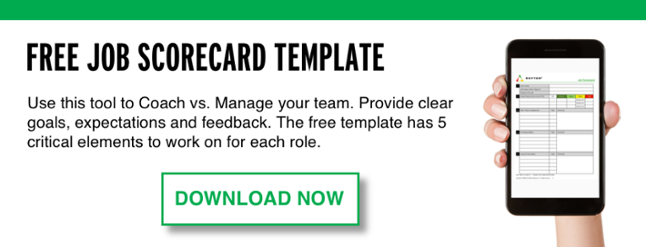According to Gallup, only about half of
How to Implement Job Scorecards
1. Decide how Job Scorecards may impact your internal processes. For example, will they impact performance reviews, development plans, or compensation?
2. Work on Job Scorecards for the Executive Team first.
3. Roll Job Scorecards to each department. Start with an objective statement for the department, then identify each role in the department.
4. Managers work with each team member on their purpose within the department, the key responsibilities and desired results of their role, and the skills and competencies needed to fulfill those responsibilities.
The steps sound pretty straightforward, but creating Job Scorecards for everyone can be quite an undertaking. It is essential that the person filling the role and their manager are 100% aligned and that all the essential responsibilities and results for the department show up on someone’s Job Scorecard. Often, this process takes some back and forth and involves individual work, one-on-one work with a manager, and time to share all the Scorecards as a team.
For each Job Scorecard, here are the questions each person will need to answer:
- What is your current role?
- Who do you report to in your role?
- Why does this employee role exist? What is the purpose?
- What key result(s) is the person filling this role accountable for, and how will success be measured - what metrics and KPIs? You can browse our comprehensive list of metrics for your KPI scorecard to get you started.
- What are the key responsibilities of this employee? What does this person do?
- What skills and competencies are required to be successful?
- What behaviors should be demonstrated by each person in the company? (These are the company's Core Values.)
Hopefully, this Job Scorecard Template (employee scorecard) will help you start the process of creating Job Scorecards for yourself and your team. With this role clarified, your team will be engaged and empowered to achieve performance goals and grow their most valuable skills. Job scorecards are recommended to be used in the hiring process by the experts at Topgrading.



